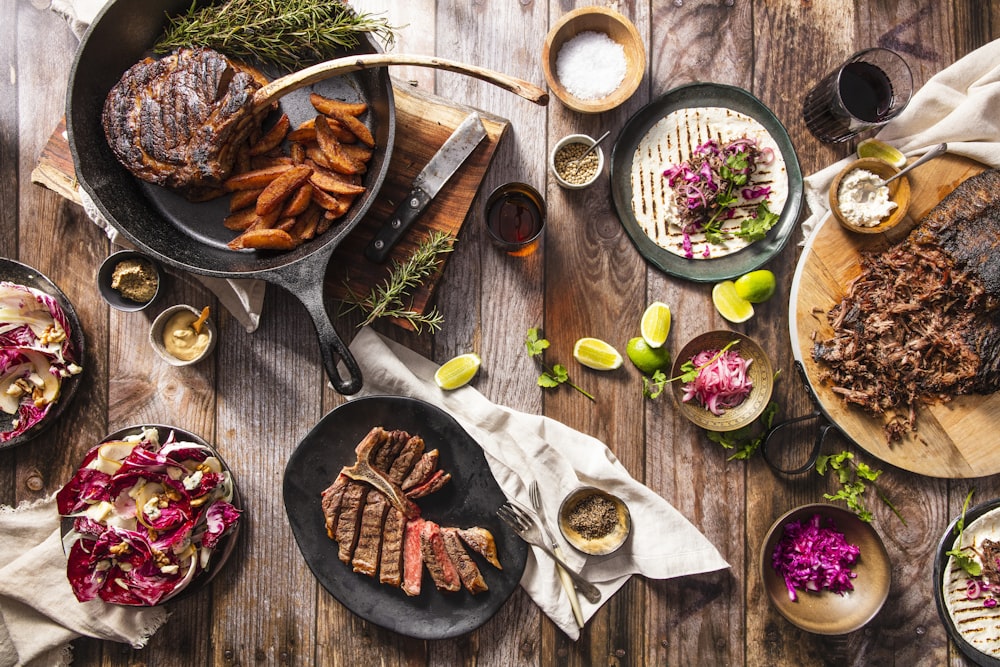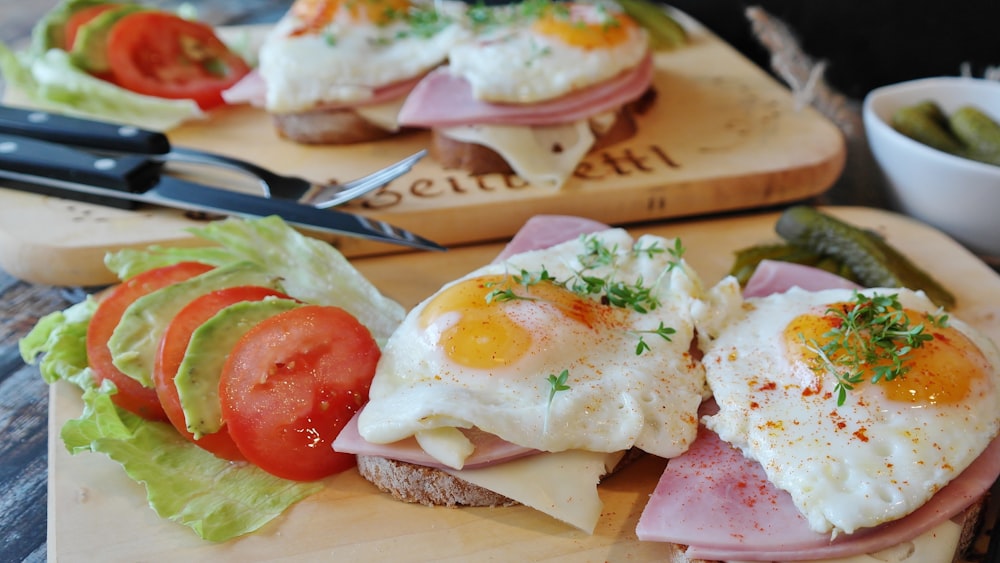
If you are at all familiar with the bodybuilding world, chances are you have heard the term ‘bulking’ at least once or twice. Bodybuilders need to know which foods to eat when bulking, as does anyone who wants to ‘bulk’ up their muscles.
The sport of bodybuilding generally consists of three stages of dieting (or four stages if competitions are involved). These stages are bulking, cutting, and maintaining. Competitive bodybuilders add a fourth stage of preparation for a competition that involves drastically cutting calories while maintaining an intense resistance training program.
During the bulking stage, or ‘bulking season’ an athlete is eating extra calories for a set amount of time. They know the foods to eat when bulking, and they’re following a diet plan that puts them in a calorie surplus instead of a deficit in an effort to gain weight instead of losing it.
Some people, athletes and non-athletes alike, view bulking as ‘bad’, citing the effect it has on an individual’s metabolism, stress on the heart and skeletal system. However, there are a few different ways to approach bulking in a healthy, safe way. What’s more, bulking isn’t just for serious, competitive bodybuilders. Anyone looking to add muscle mass, or even just gain weight for health reasons, can benefit from a healthy bulking diet.
So, how can bulking be done safely and effectively? Which are the best foods to eat when bulking? Below, we’ll review these questions, as well as provide an overview of what bulking is.
What is Bulking?
Bulking is the phase of bodybuilding that focuses on gaining muscle mass. In order to build muscle, however, you first need to increase the amount of body fat.
During the bulking phase, you will need to eat around 10% more calories than your body actually requires. Accumulating body fat is therefore to be expected, but combining this meal plan with an intensive weight training program turns that fatty tissue into new muscle.
How do you figure out how many calories you need to be eating? And how do you decipher which are the best foods to eat when bulking?
Using any one of the calorie counting apps out there (such as ‘MyFitnessPal’) can help you figure out what your body is burning at rest. Once you know that, just add 10% more. Alternatively, you can use the Miffler St Jeor formula to figure it out on your own. It looks like this:
- For men: (10 × weight in kg) + (6.25 × height in cm) – (5 × age in years) + 5
- For women: (10 × weight in kg) + (6.25 × height in cm) – (5 × age in years) – 161
Bulking is not a free pass to just eat whatever you want. To make bulking effective (and to turn that fat into muscle) it’s important to track the macronutrients you’re consuming in your bulk foods. A proper ratio would have you getting around 45-60% of your calories in the form of healthy, slow-digesting carbs, 15-30% from healthy fats, and 30-35% from protein.

Good Foods To Eat When Bulking
While it’s important to meet your target macros in all three areas (carbs, fat and protein) protein is absolutely the most important. After your workout, your body recovers by adding new muscle fibres, and it uses protein to begin that process, known as protein synthesis.
Healthy protein sources include:
- Beef
- Poultry
- Eggs
- Seafood, including shellfish
- Milk
- Yogurt
- Cottage cheese
- Legumes and beans
- Tofu
- Edamame
Get your healthy fats from sources such as:
- Healthy oils, like coconut, avocado and olive oil
- Nuts and nut butter
- Oily fish
- Avocado
- Cheese
- Dark chocolate
When it comes to carbohydrate consumption, you need to be a bit more careful, since there are plenty of carbs out there that are low in nutritional value. Healthy options are carbs that are slow digesting and include:
- Grains (brown rice, oatmeal and whole-grain bread)
- Buckwheat pancakes
- Fruit, especially berries
- White potatoes and sweet potatoes
- Squash
- Beets and turnips
- Peas
- Corn
- Broccoli
- Cauliflower
What is ‘Dirty Bulking’?
Obviously, consuming so many calories each day can be challenging. On top of the challenge of finding the time needed to prepare food and eat it, some folks simply don’t have a big enough appetite. In order to still meet a caloric surplus, some bodybuilders turn to ‘dirty bulking’, eating foods that are high in calories but low in nutritional content. This includes plenty of cakes, cookies and other baked goods, as well as fried foods, either homemade or from a fast-food chain. These aren’t the best foods to eat when bulking.
Dirty bulking is a good way to meet your caloric surplus, but it stresses your body because you’re not getting the nutrients needed to function optimally. Your workouts, and importantly, your recovery, will suffer greatly. Not only that, eating foods so high in sugar puts you at risk for developing type II diabetes, and trans fats from fried foods increase your risk of heart disease.
If you’re having a hard time eating as much as you need to, there are a few things you can try before resorting to dirty bulking.
- Space your meals out. Try eating smaller portions at mealtime while snacking throughout the day.
- Keep in mind that the more you work out, the more food your body will need. Limit your cardio and focus on weight training.
- You can drink your calories too! Drinking sugar-free fruit juice or smoothies with yogurt and milk and even taking shots of olive or avocado oil are quick ways to up your caloric intake without filling you up.
- Vary your dishes. Adding a wide variety of vegetables to a stir-fry or topping your salmon or baked potatoes with a sauce or a glaze are two easy ways to add calories to a meal.

How Long Should You Bulk For?
Some bodybuilders alternate between cutting and bulking for years at a time. Generally speaking, if you tend to have a lower percentage of body fat, bulking before cutting is the best place to start.
The bulking phase can last anywhere between 1-6 months, but you can bulk for longer. Bulking for at least 4-6 weeks is recommended in order to see results. Typically, body builders will bulk for 3-4 months before starting the next phase: cutting. The length of time you decide to go on a bulking diet will depend on your goals and your body’s starting point. As with any kind of diet, always consult a doctor before starting a bulking diet plan.
In order to get the most out of time spent bulking, you can consider adding a ‘gainer’ to your diet. Mass gainers differ from protein powder in that they include carbs and some fats in addition to protein. Mass gainers can be added to smoothies or water, as well as mashed potatoes, oatmeal, or juice.
Are There Any Negative Side Effects to Bulking?
When done safely, following a bulk plan can be an effective way to gain weight and build bigger muscles. However, that’s not to say that bulking is 100% risk free. Aside from the health concerns associated with dirty bulking, adding too much weight to your frame, whether that be from fat tissue or muscle mass, can add stress to your muscle connectors. As your muscles grow, the tendons, ligaments and joints don’t, and the added weight can be extremely hard on your skeletal system. People who are naturally built more slim and lean are at a higher risk for injury or strain when they bulk.
What’s more, certain genes impact muscle growth. Therefore, just because you’re following a bulking diet doesn’t necessarily mean you will be building muscle as easily as someone else following the same bulking diet.
Are You Genetically More Likely to Bulk Up or Stay Lean?
If your CircleDNA test results show that you’re genetically more likely to have a harder time building muscle mass as you’re genetically leaner, you can still bulk. It just might be harder for you or take longer, because of your genes.
Before you see a specialist to create your bulking or cutting diet plan, consider taking a DNA test from CircleDNA first to find out what your genetic makeup can tell you about your body’s natural ability to build muscle mass.






This Post Has 2 Comments
Comments are closed.